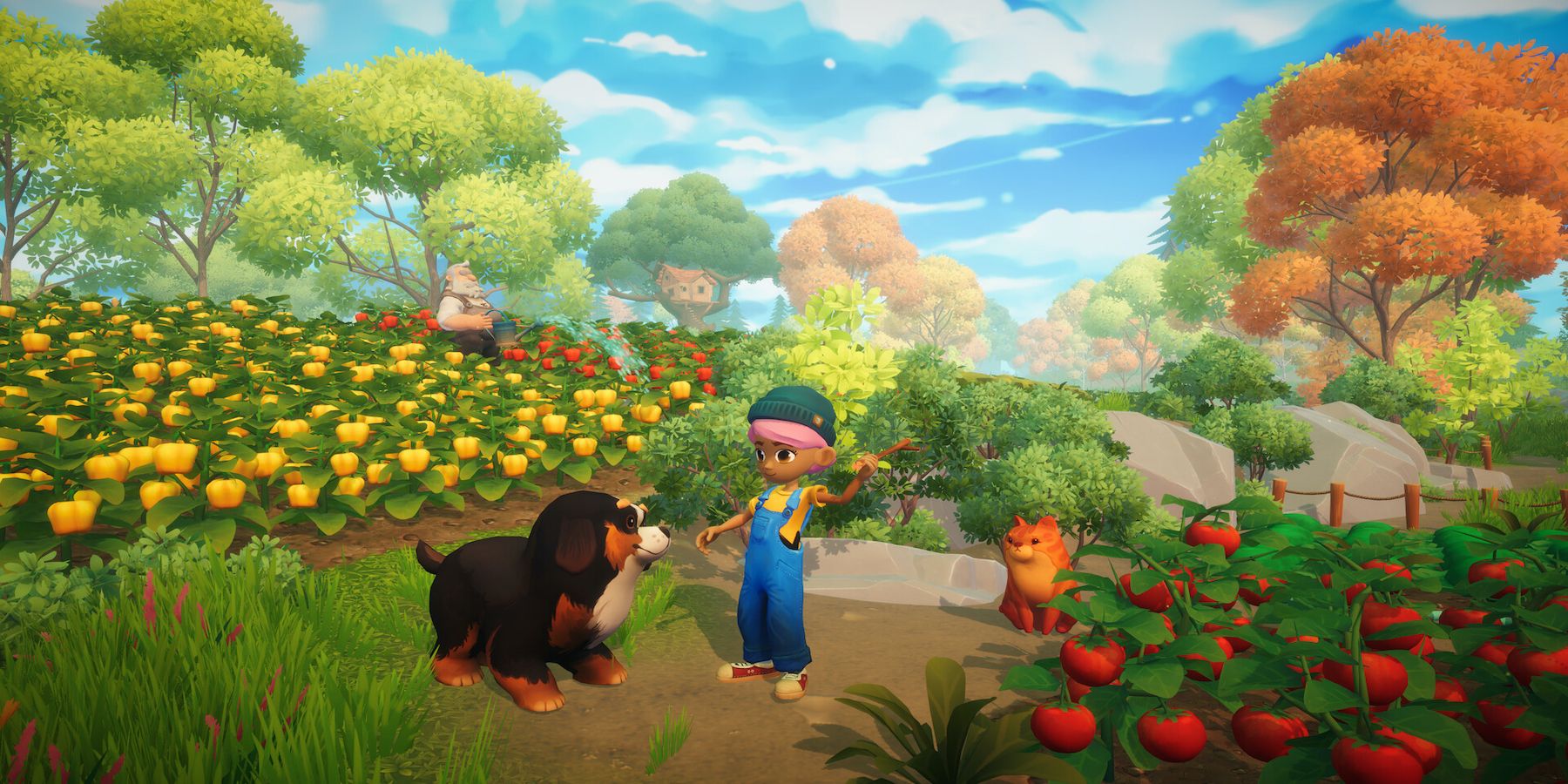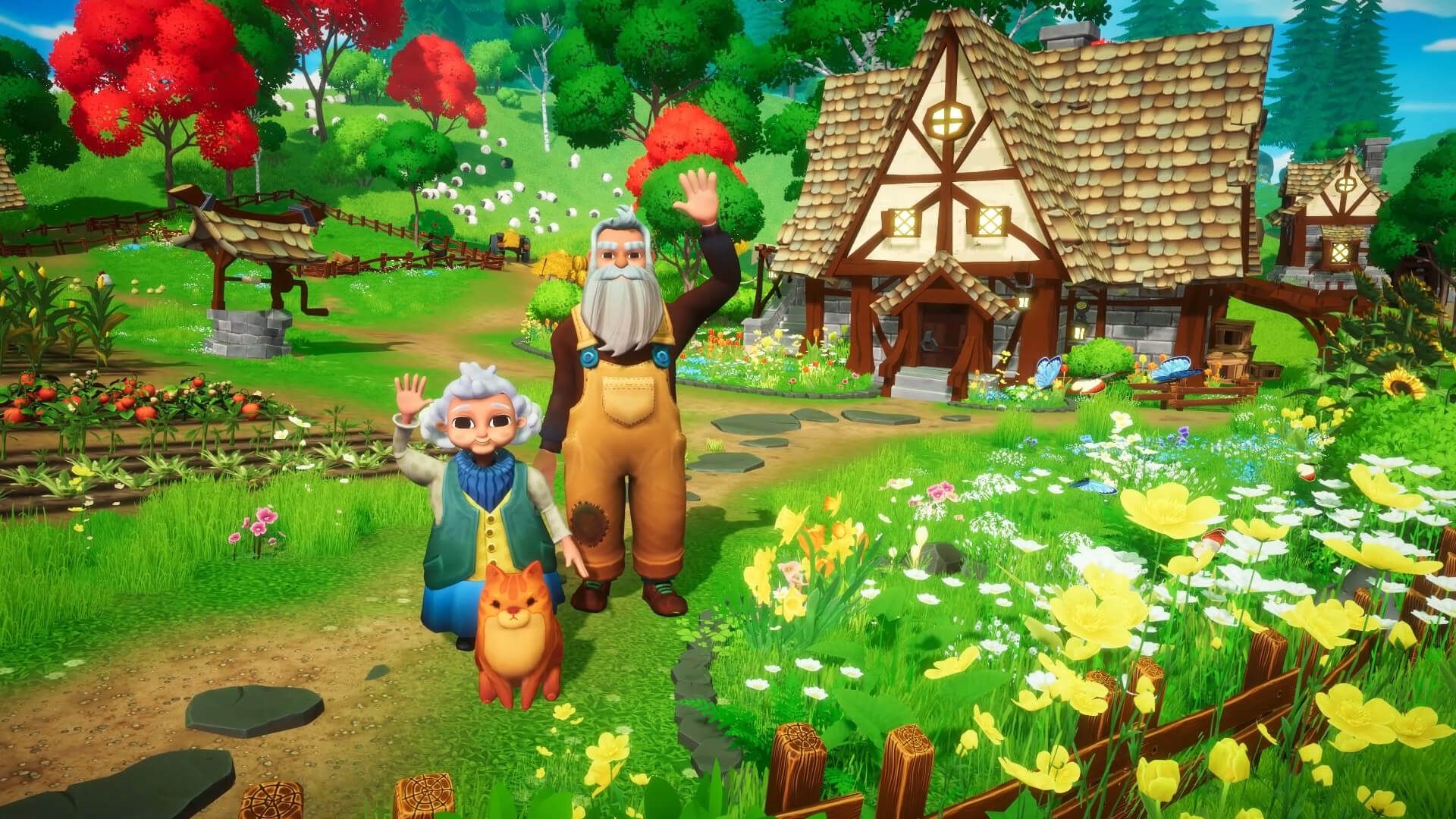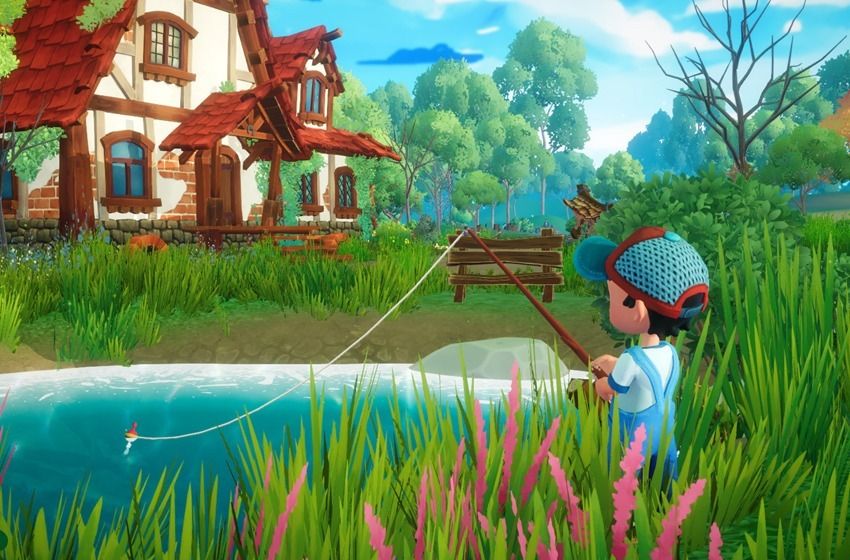Everdream Valley is an upcoming 2023 game developed by Mooneaters and published by VARSAV Game Studios. Everdream Valley is a cozy farming adventure game essentially split into two parts: restoring the farm and exploring strange dreams that connect the player to their animals.
Game Rant recently spoke to Marek Maruszczak, the CEO of Mooneaters and lead game designer of Everdream Valley about various aspects of the game, including its quests, characters, and so on. Maruszczak touched on not only what inspired the game, but also what players can expect in terms of gameplay, smaller tasks, and the mechanics that work to make this game lovable. The following transcript has been edited for brevity and clarity.
Q: What inspired you to create Everdream Valley, and how did you come up with the concept for the game?
The concept for the game arose organically from the experiences of the various team members. In Poland, spending holidays in the countryside with extended family is, or at least used to be, very popular. Everyone has different memories of this period, but you start to pick up on certain similarities: running away from geese, milking cows, playing with the dog or cat, catching insects, fishing, building a tree house, etc.
All these adventures were also always lined with a solid dose of magic or imagination. We’d make up stories hiding behind old ruins or pretend that the animals could talk to us for example. These were amazing experiences that certainly influenced the kind of people we are, how we perceive nature, and how we recharge our batteries. So, we wanted to create something that recaptures those days but really dials up the emphasis on adventure and magic.
Q: What sets Everdream Valley apart from other farming sims like Stardew Valley or Harvest Moon?
Certainly, our mechanics of conscious dreams and also the emphasis that the animals play on the whole game. At a certain point, the player starts having strange dreams during which he controls various animals that they bring to the farm. The more animals on the farm, the more types of gameplay and mini-games that become available. This allows you to see what the farm you are creating looks like from the point of view of say, a tiny mouse, but also a magpie flying high above the ground or a horse racing against other animals.
It was also very important for us to interact with the animals and make each serve a specific purpose. You can easily see this when you consider how we’ve divided every animal we add into 1 of 4 groups:
1. Farmed animals. This is self-explanatory. Your typical farm animals such as cows, pigs, chickens, etc. Some can be ridden, all can be petted, each offering the player something different as a reward for looking after them.
2. Wild animals. These are roaming the map freely but many can be tamed at some point in the game to add to your farm to offer unique benefits. Those that can’t still serve some gameplay purpose or still give the player some benefit from interacting with them.
3. Helper animals, namely the cat and the dog. Both pets have some interesting mechanics to offer, e.g. tracking by scent and detecting sick animals and there will be systems in place to bond and train each.
4. Collectible animals, i.e. dozens of species of butterflies, beetles, frogs, fish, etc. that the player can collect.
Q: Could you give an overview of the quests available in the game?
The game features a main storyline and quite a few side quests. The player arrives at their grandparent's farm during the summer holidays and is initially unenthusiastic about it all. So far, everything looks pretty standard. There are some chores to do around the farm and little adventures to undertake in the open world. At some point, however, the player begins to have strange dreams during which they take control of various animals living on and around the farm. From then on, their main task becomes discovering the source of these dreams. In between, they can undertake quests related to the farm and the valley, e.g. revitalizing an old fruit orchard, healing sick animals, finding the source of strange noises, planting flower meadows, providing entertainment for goats, and so on.
Q: Could you share some information about key characters such as Grandma and Grandpa?
The most important characters on the farm are the grandfather, grandmother, and the merchant. The grandfather is an old prankster who has tasks for the player mainly related to the construction of various buildings and caring for animals. Grandma takes a detached approach to Grandpa's jokes but is happy to teach us how to sew, milk cows, and take care of the plants. Both grandma and grandpa work on the farm and are happy to share with us the fruits of their labor like wood and food. Their efficiency is closely linked to what the player will do to and around the farm.
The merchant has tasks for us to acquire new products and animals. He also has his own hobbies and interests that, if you appeal to, can be used to lower prices in the shop. By completing tasks and moving the storyline forward, we will learn more about both the human inhabitants of the valley and the various animals. We will also be able to talk to some of the animals and perform various tasks for them.
Q: How did you approach designing the different animals that players can become in their dreams?
In designing the gameplay from the animal's point of view, we had a few main considerations. First, we wanted wherever possible, for the games with animals to use exactly the same places that the player can visit during the day. Almost every place in the valley and on the farm can be changed by the player, e.g. by planting trees, putting up fences and other buildables, or, conversely, by cutting down forests, clearing bushes, and so on. For example, how easy it will be to chase away wolves from sheep depends on how the player constructs pens. When playing with a mouse, it will be easier for him to hide from a cat if his farm has tall grass and lots of hiding places.
We also wanted the outcome of each game to somehow affect what happens during the day, like it makes the mice stop eating our supplies or the sheep actually get kidnapped from their pens. At the same time, we did not want any of the games to end in a way that could not be reversed. Therefore, no animal can die or be permanently injured. All negative situations can be reversed.
Q: Can you describe the process of rebuilding the farm and restoring it to a successful business?
When the player arrives at the farm, there are not many animals or plants on it. They have to rebuild and create new pens, find lost animals, and rebuild their population. They will be able to buy some of the animals and equipment, and they will earn money primarily by growing plants, raising animals (both obtaining livestock products and selling the animals themselves), and finding various items, plants, and catching animals around the farm.
They are helped throughout the process by their grandparents, who teach them how to build new facilities, but also work and give them the items they collect. Over time, the player acquires blueprints for new buildables, seedlings of new plants, and the option of bringing more new animals to the farm.
Q: Can you tell us more about the mini-games that the player character experiences in their dreams as animals?
There are at least 8 dream minigames so far. For example as a dog, we will chase away wolves to prevent them from kidnapping our animals. As a mouse, we have to sneak around the farm collecting food and evading the cat. As a magpie, we will fly over the farm and search for treasures, and so forth. We want to leave a few for players to discover. The different games mean different mechanics and rewards, some of which are variations on existing games (our ducklings game is a kind of snake game).
Q: Can you explain the importance of the player character's dog companion in the game, and how it differs from other pets like cats?
Both the cat and the dog are important animals. The dog has a training level, while the cat has a friendship level. With the dog, you're leveling up by playing fetch and performing tasks while the cat requires you to play cat agility games. The higher the level an animal has, the closer it sticks to the player and the more functions it can perform. The dog, for example, can help herd sheep, in which case we control both it and the player with a shepherd's whistle. It can also track animals and objects.
For example, if we give it wool to smell, it will lead us to the nearest sheep. The cat, on the other hand, detects sick animals from a considerable distance and catches pests and insects, and gives them back to the player. In the case of the dog, we also have several different breeds to choose from. We wanted to add different cats, but they didn't get along with each other.
Q: How does sleep work in the game, and how does it affect the passage of time?
The player can go to sleep at any time and effectively speed up time by jumping to the next day. During this time, however, time does not stop flowing, so it is impossible to skip, for example, watering plants or feeding animals in this way. While sleeping, the player gets access to dream games. If there is a story dream game waiting for them, the game will notify them about it. Otherwise, they can draw a game using the dream lottery system, which is run by an animated scarecrow.
Q: Can you explain how cooking works in the game and how certain recipes can increase a player's stamina?
The player can cook using fruits, vegetables, water, and some animal products such as eggs or milk. However, they cannot kill or eat animals. During the game, you will acquire recipes that he can use during the mini-cooking game, or you can try to discover them by combining different ingredients to see what comes out. The more ingredients a dish has, the more it raises the maximum stamina level. However, if the player gets stung by a bee or bitten by a goose, for example, the maximum level will drop, and the player may even need medicine to get back to the basic stamina level.
Q: What types of building customization options are available in the game, and how much freedom do players have when it comes to building structures?
There are several different types of fences in the game, furniture both for inside and outside, and functional items such as animal feeders, hay dryers, and shelters. There are also lanterns, carpets, and other aesthetic elements of the environment. Most of these can be bought, created, or found by the player and placed almost anywhere. As long as, of course, there is no water, rock, or too steep a slope. Wild animals however can destroy some of the structures like fences. There can also be fires which are of course a hazard to your buildables.
Q: It's become somewhat common for cozy games like this to feature multiplayer options. Has there been any discussion about adding any multiplayer features in the game, or is it primarily a single-player experience?
We have of course looked into it and are still considering adding this as a feature later on after release. But online multiplayer is a massive undertaking, and we knew that if we ever want to finish the game in a timely manner, we’ll need to put certain features on ice. Multiplayer was one of them.
Q: Right now Everdream Valley is only confirmed for PC, Switch, and PlayStation. Is there any hope for an Xbox version of the game?
Hope should never be abandoned. After all, the Polish national team is still playing soccer, right? But seriously, we are working on hopefully releasing the game for Xbox as well. I think it's more of a matter of time, but if anything, you can write directly to Phil Spencer that you want to chase geese on his console as well.
Q: Is there anything else you’d like to add?
Yes, you can ride a pig in our game.
[END]
Everdream Valley will be available on PC, PS4, PS5, and Switch on May 30.




